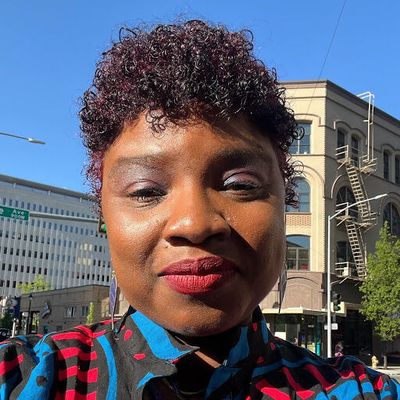Though it may sound like a far-fetched conspiracy from the pages of a tragic dystopian novel, human zoos, or ethnological expositions, were real events throughout the colonial era. Remnants of global imperialism eek into societal behaviors, like an etch-a-sketch tracing the past with new clothes. A marker of entitlement and privilege, human zoos are the lesser told stories, whispers that leave modern day conundrums void of historical context, opening the door for straw man fallacies and the reinvention of sadistic tropes. When dog whistles become cacophonous shrieks and grotesque biases graduate from implicit to explicit, it’s time to pull back the curtain and get uncomfortable.
Ideas of sub-humanity, savagery, ethnic inferiority, and racial fetishization were manifested in the colonial era of human zoos, which became the blueprint of the modern-day circus. Carl Hagenbeck was a German merchant of wild animals who supplied European zoos. He is considered the architect of ethnic shows, which became a trend during the 19th and 20th centuries. In 1874, Hagenback displayed Samoan and Sami people when animal exhibits became less lucrative. In 1876, according to the article “Staged Otherness: Ethnic Shows in Central and Eastern Europe, 1850-1939” (2021) by Hilke Thode-Arora, Hagenbeck sent for “wild beasts and Nubians” from Egyptian Sudan, from which a Nubian exhibit was put on tour in Paris, London, and France. Seeking to bring exotic displays to industrialized countries, the trend of making indigenous and foreign people spectacles took root. Western countries saw this exploitation as a way to solidify a message of superiority while also building capital. Let’s look at some examples.
South African woman Saartjie Baartman was put on display in London and France from 1810 until her death, at age 26, in 1815 because of her full posterior. She was sexualized and designated as “the Venus Hottentot” (hottentot is a term the Dutch used to describe the Khoikhoi people of South Africa and is considered a slur in modern times). In 1878 and 1889, at Parisian’s World Fair, an exhibit called “Negro Village” was one of the attractions, where 28 million people came to see nude and semi-nude humans taken as spoils of war. Similarly, in 1895 at the Crystal Palace in London was a colonial African Exhibit. In 1906, Madison Grant, a eugenicist and head of the New York Zoological Society, displayed Oto Benga, a Congolese man, alongside apes in the Bronx Zoo; Benga struggled to live a normal life, and died by suicide via a gunshot in 1916. In 1925, Africans in alleged native dress were displayed at the Belle Vue Zoo in Manchester, England in an exhibit called “Cannibals.” In ethnographic expositions, indigenous peoples (not exclusive to Black people), were viewed by spectators in contrived natural habitats, and placed within a fence. In some cases, as in that of Bartmann, they were poked and touched. Anthropology was also used as a justification for these displays. Upon death, the remains of many were examined for scientific purposes. The essence of human zoos was to promote the idea that indigenous people of non-Western nations had not intellectually evolved, were uncivilized, and as such, deemed scientifically inferior. Centuries later, we are desensitized to the germane connection between ethnographic expositions, xenophobia, racism, and harmful nativism ideologies, all agents of subliminal (or some would argue not so subliminal) indoctrination. Double standards exist in the immigrant community. The tale of perseverance and pulling oneself up by bootstraps hits differently when you are not emigrating from Europe. While the Ellis Island immigration journey is romanticized, certain immigrants catch the stray bullets of bigotry.
The bliss of ignorance is a pathetic excuse not to engage in the education of this ugly and painful history; ethnographic expositions have consciously and subconsciously affected us all. More than a stain, human zoos have left behind gaping wounds that have culminated into stereotyping, discrimination, corruption, and violence. In a time when diversity, equity, and inclusion are being sanitized or erased altogether, acts of bigotry and prejudice still live out loud. The language may be encoded, but the message is as clear as ever. In the hallways of schools, students dig deep into their arsenal of insults to hurl “monkey” slurs at Black kids on any given day. Or, maybe it has become a term of jest traded in someone’s best “Wild ‘N Out” rendition. When I hear this, I can’t help but think of Benga. Or Baartman. Or nameless others whose lives were ruined by ethnocentrism. This term, along with other racial and ethnic slurs, is the harvest of centuries old dehumanization and it should make every human being uncomfortable, lest you become one of the denigrated.
Human zoos are not fiction. They were the motivation behind imperialism, the energy behind capitalism, built on the back of human exploitation and begs the question of where the real barbarism lies. The boogeyman archetype has been conjured up so effectively that it has left an indelible imprint in the systems of entire nations. So, the next time you hear the direct or encoded language of bigotry, take time to discuss the history of ethnographic expositions and its impact on how we perceive others. Ignorance is passed down, and it is certainly not bliss.
